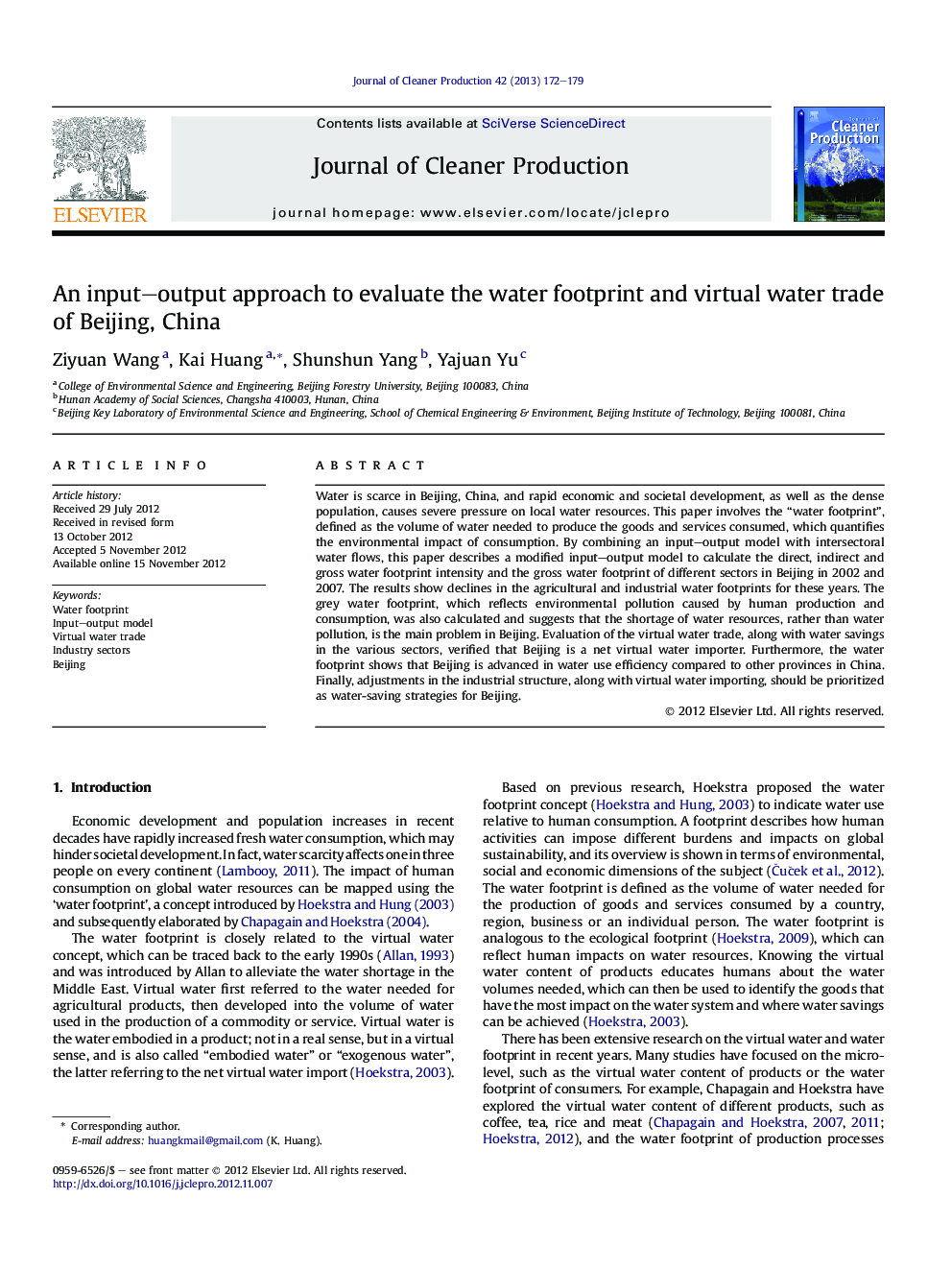| Article ID | Journal | Published Year | Pages | File Type |
|---|---|---|---|---|
| 8107682 | Journal of Cleaner Production | 2013 | 8 Pages |
Abstract
Water is scarce in Beijing, China, and rapid economic and societal development, as well as the dense population, causes severe pressure on local water resources. This paper involves the “water footprint”, defined as the volume of water needed to produce the goods and services consumed, which quantifies the environmental impact of consumption. By combining an input-output model with intersectoral water flows, this paper describes a modified input-output model to calculate the direct, indirect and gross water footprint intensity and the gross water footprint of different sectors in Beijing in 2002 and 2007. The results show declines in the agricultural and industrial water footprints for these years. The grey water footprint, which reflects environmental pollution caused by human production and consumption, was also calculated and suggests that the shortage of water resources, rather than water pollution, is the main problem in Beijing. Evaluation of the virtual water trade, along with water savings in the various sectors, verified that Beijing is a net virtual water importer. Furthermore, the water footprint shows that Beijing is advanced in water use efficiency compared to other provinces in China. Finally, adjustments in the industrial structure, along with virtual water importing, should be prioritized as water-saving strategies for Beijing.
Related Topics
Physical Sciences and Engineering
Energy
Renewable Energy, Sustainability and the Environment
Authors
Ziyuan Wang, Kai Huang, Shunshun Yang, Yajuan Yu,
